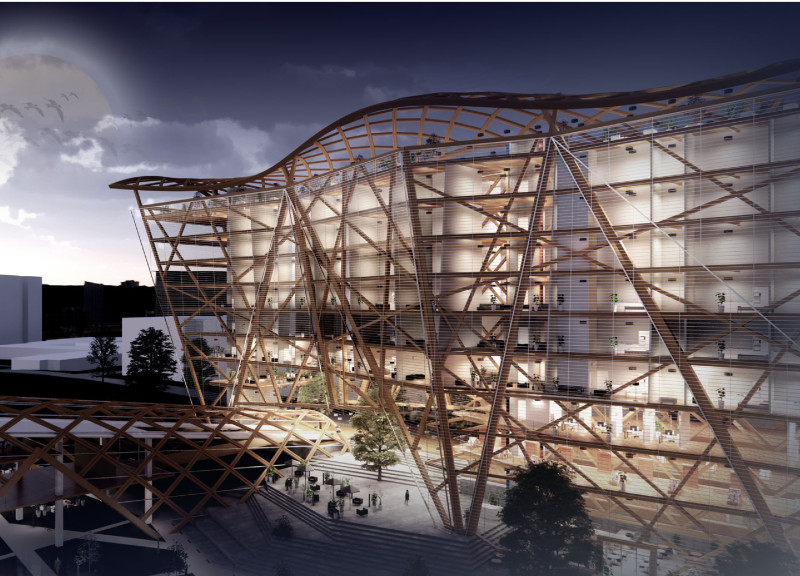5 key facts about this project
Functionally, the design serves a multi-purpose role, integrating spaces for living, working, and leisure. This versatility is a reflection of contemporary architectural trends that prioritize adaptability in the face of changing societal needs. Each area within the project is structured to maximize usability, allowing for both public and private interactions seamlessly. The design incorporates various zones that cater to diverse activities, from collaborative workspaces to tranquil residential areas. This attention to multi-functionality underscores the architecture's responsiveness to the needs of its inhabitants, enabling them to engage with the building in a meaningful way.
Materiality plays a significant role in conveying the project’s identity. The selection of materials demonstrates a thoughtful consideration of both aesthetic and environmental factors. A combination of concrete, glass, steel, and sustainably sourced timber has been utilized, each chosen not only for its structural properties but also for its ability to adapt to the surrounding environment. The use of glass allows for an abundance of natural light, enhancing the overall ambiance while promoting energy efficiency. The concrete elements provide a robust foundation and contribute to the enduring aspect of the design, whereas the incorporation of timber adds warmth and human scale to the otherwise modern facade.
Unique design approaches are evident throughout the various architectural elements, showcasing a commitment to innovation without sacrificing functionality. The building's silhouette is characterized by clean lines and subtle curves, creating a dynamic visual experience as one approaches the structure. Windows are intentionally placed to frame views of the landscape, inviting generous amounts of daylight and fostering a connection to the outdoors. Roof gardens and green terraces are seamlessly integrated, enhancing biodiversity and offering residents opportunities for outdoor recreation, thereby reinforcing the project’s connection to nature.
The design also embraces sustainable practices, aiming to minimize its ecological footprint while enhancing occupant well-being. Energy-efficient systems are embedded within the architecture, including solar panels and rainwater harvesting systems, demonstrating a commitment to sustainability and modern living. The interplay between indoor and outdoor spaces is designed to enhance the user's experience, inviting them to interact with nature, which is vital for mental well-being in urban settings.
Moreover, attention to detail is evident throughout the project, with thoughtful design choices that prioritize user comfort and accessibility. Spatial planning considers movement patterns, ensuring a fluid experience as users navigate through various areas. The incorporation of adjustable walls allows for flexibility in usage, adapting to changing needs over time.
This architectural design stands as a testament to modern values in urban development—prioritizing sustainability, community connection, and responsive space usage. Each facet of the project reflects a deep understanding of contemporary living, making it a relevant example of how architecture can address current lifestyles and challenges. To explore the intricate architectural plans, sections, and designs further, readers are encouraged to delve into the project’s presentation, where deeper insights into the architectural ideas and inspiration can be uncovered. Engaging with the architectural details will provide a more comprehensive understanding of the design's impact and significance in the context of its environment.


 Alistair Chang
Alistair Chang 




















